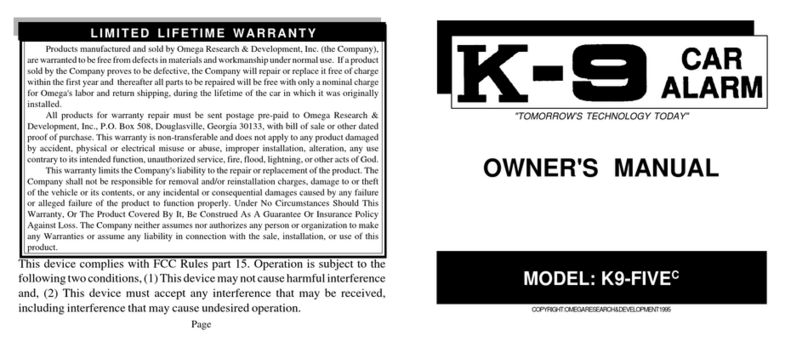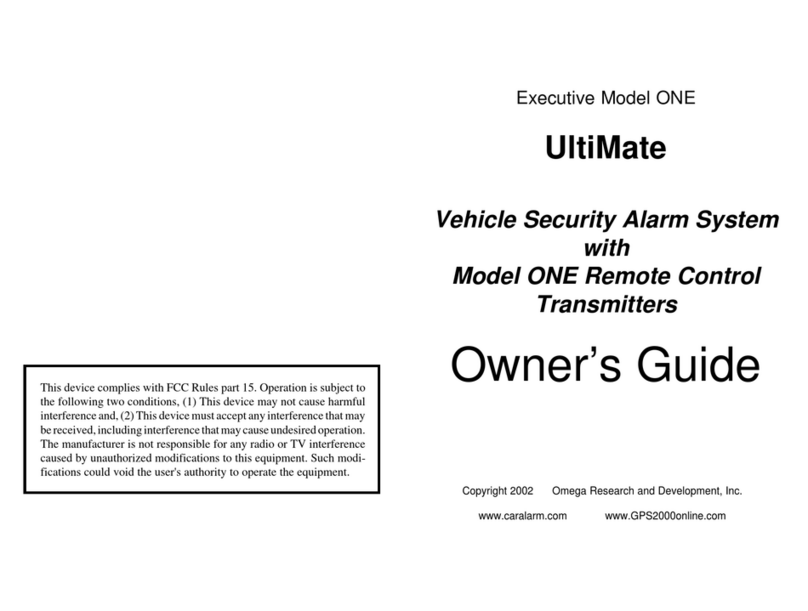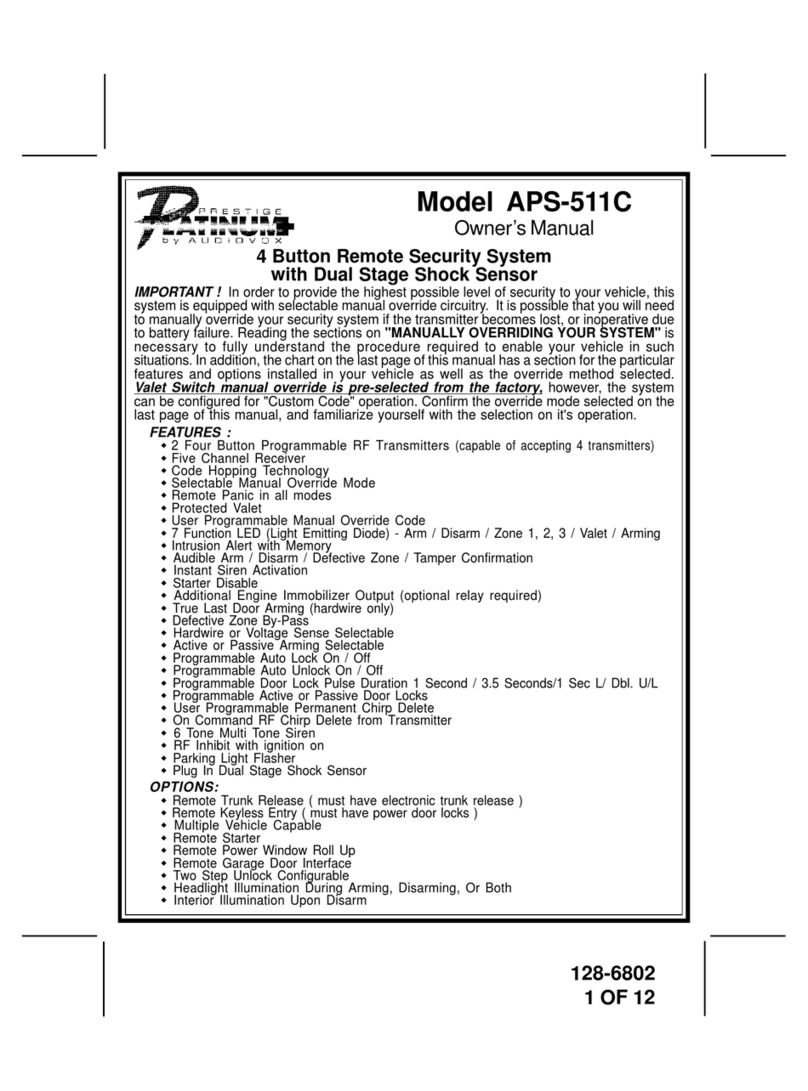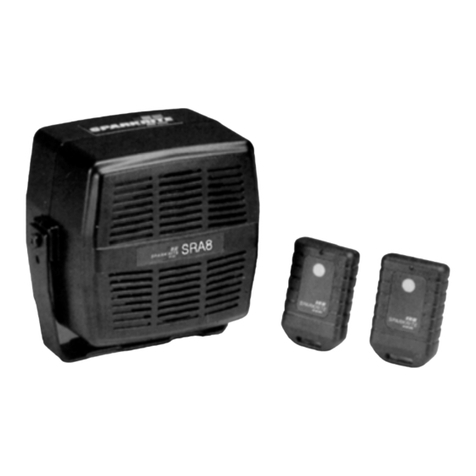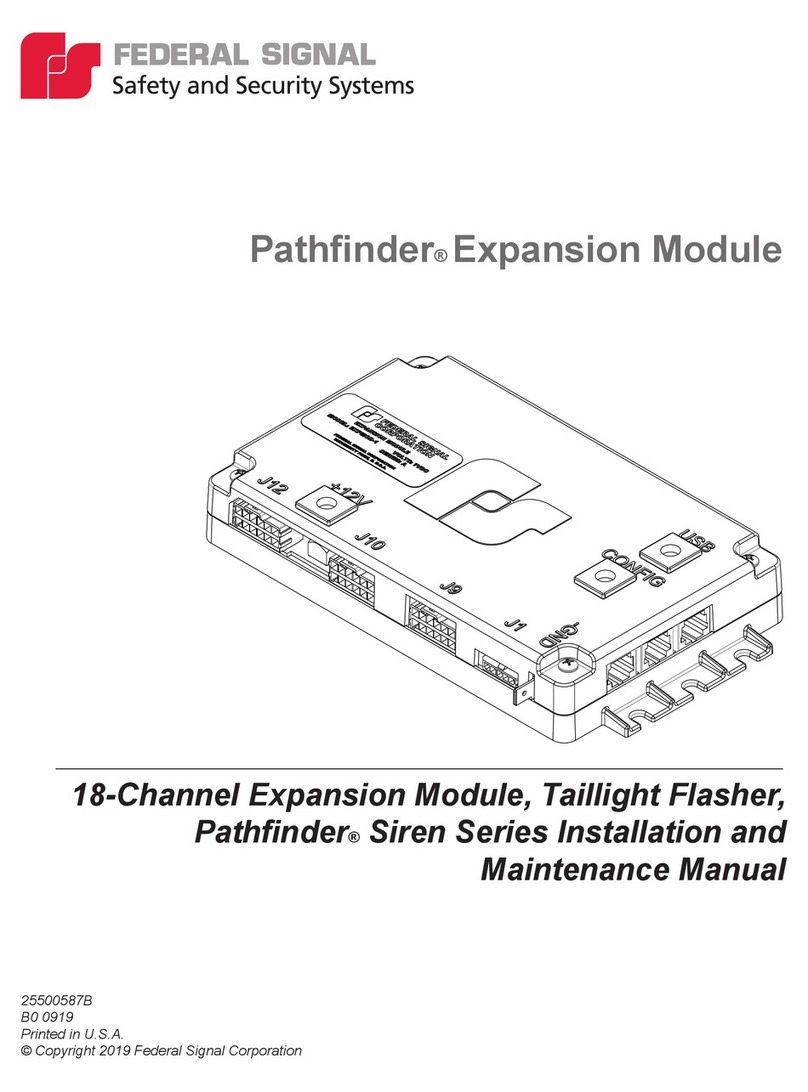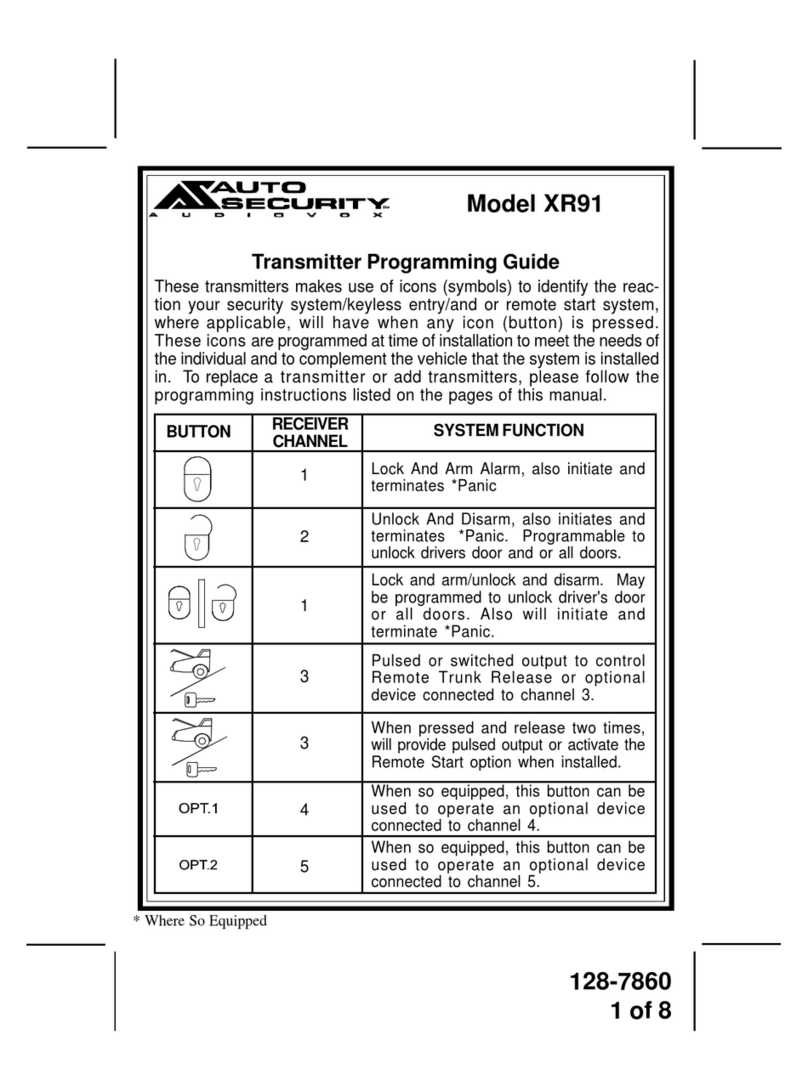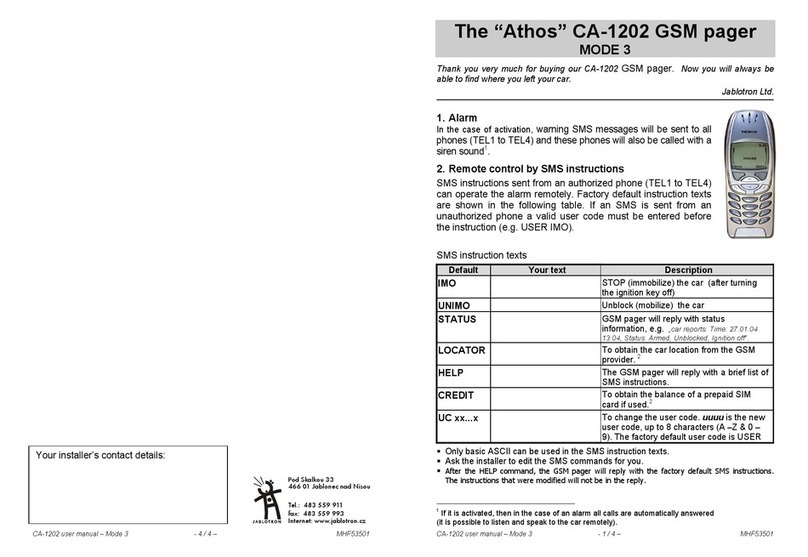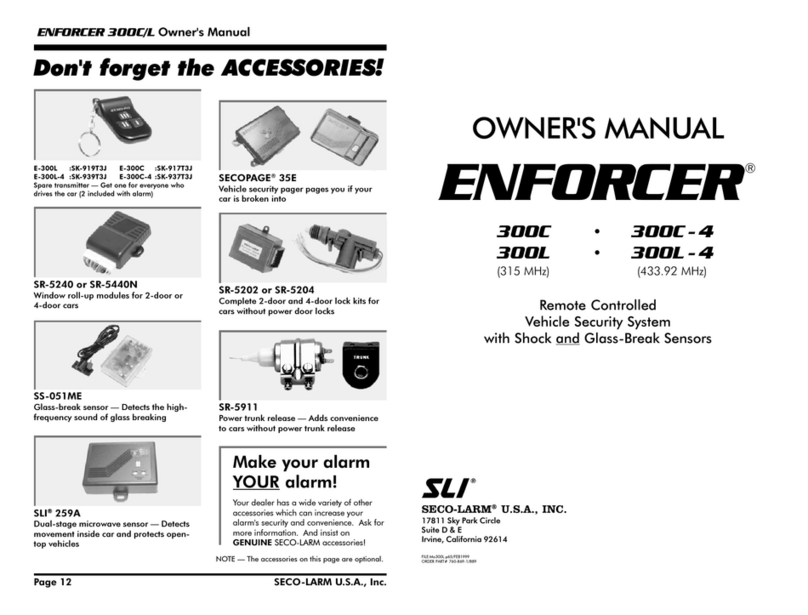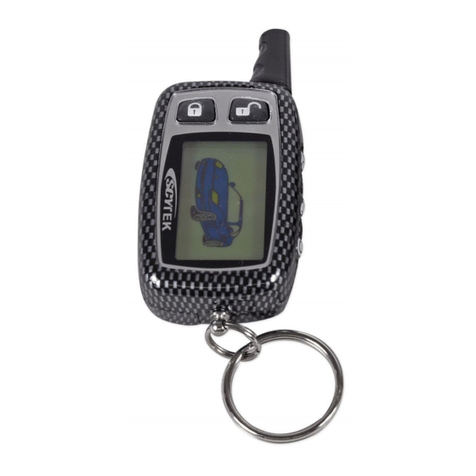Contents
WIRE CONNECTIONS
WiringDiagramOverview ......................................................................................................................22-23
Black Wire (Negative Ground Input) ............................................................................................................ 4
Red Wire (12 Volt Positive Input) .................................................................................................................. 5
Yellow Wire (Ignition Input) ......................................................................................................................... 6
Orange Wire (Grounded Output For Starter Interrupt) ............................................................................. 6-8
Gray Wire (Optional Trunk Release Output) .............................................................................................8-9
Brown Wire (Negative Siren/Horn Output)............................................................................................10-11
White Wire (Positive Flashing Parking Light Output) ...........................................................................12-14
Green Wire (Negative Door Trigger Input)............................................................................................ 14-16
Violet Wire (Positive Door Trigger Input) .................................................................................................. 17
Blue Wire (Negative Instant Trigger Input) ...........................................................................................18-19
Pink Wire (Optional #3 Channel Output) ..............................................................................................19-20
Black/White Wire (Dome Light Supervision Output)......................................................................... 21 & 24
STANDARDANDOPTIONAL PLUG-IN FEATURES
RedLEDStatus Light .................................................................................................................................. 25
EasyValetTM Switch ..................................................................................................................................... 25
Optional Dual Zone Sensor Port (For An Optional Sensor) ....................................................................25-26
OptionalBackup BatteryPort ...................................................................................................................... 26
Optional Plug-In Pager Port (For An Optional Omega Pager) .................................................................... 27
Optional Plug-In Power Doorlock Circuit (For An Optional Power Doorlock Interface) .....................27-40
23PROGRAMMABLE FEATURES
ProgrammingFeaturesAndTotalSystemReset ......................................................................................40-42
Page - 3Page - 42
14) Two Unlock Pulses With .8 Second Setting: Default OFF.
15) 3 Or 45 Second Arming Delay: Default 3 Seconds (ON).
16) Confirmation Chirps: Default ON (has chirps).
17) Activated Alarm Cycle 60 Or 30 Seconds: Default 60 Seconds (ON).
18) Steady Siren/Pulsed Horn Output: Default Steady Siren (ON).
19) Horn Chirp Loud or Soft: Default Loud (ON).
20) 28 Second Lock Output Upon Arming: Default OFF.
21) 3rd Channel Output Activates Anti-Carjacking Feature: Default OFF.
22) 3 Minute Current Sensing Delay Upon Arming: Default ON.
23) Open Door Warning Upon Arming: Default OFF.
Please refer to the Owner's Manual for detailed instructions on the Programmable
Features and instructions for programming transmitters.
ThisdevicecomplieswithFCCRulespart15.Operationissubjecttothe
followingtwoconditions,(1)Thisdevicemaynotcauseharmfulinterfer-
ence and, (2) This device must accept any interference that may be
received,includinginterferencethatmaycauseundesiredoperation.
